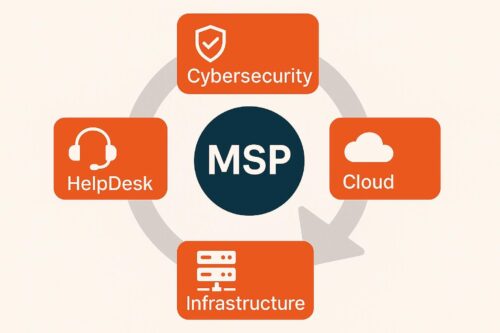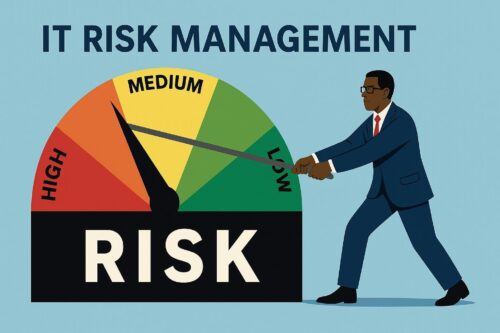What Your Organization Must Know About Cyber Liability Insurance: Expert Insights for Protection
Cyber liability insurance has become a crucial safeguard for organizations in today’s digital landscape. As cyber threats evolve and multiply, businesses of all sizes must protect themselves from potential financial losses due to data breaches, ransomware attacks, and other digital risks. Cyber insurance provides financial protection against the detrimental impact of cyber events, offering coverage for expenses related to data recovery, legal fees, and reputation management.
When considering cyber liability insurance for your organization, evaluating your specific risk exposure and understanding the key components of available policies is essential. You’ll want to assess factors like your industry, data handling practices, and existing cybersecurity measures. This information will help you determine the appropriate level of coverage and ensure you’re adequately protected against potential cyber incidents.
As you explore cyber insurance options, remember that the landscape constantly changes. By 2025, cyber insurance is expected to become an even more critical tool for managing risk. Stay informed about emerging trends and work closely with insurance providers to tailor a policy that meets your organization’s unique needs.
Key Takeaways
- Cyber liability insurance protects your organization from financial losses due to cyber events
- Evaluate your specific risk exposure to determine appropriate coverage levels
- Integrate cyber insurance with robust cybersecurity practices for comprehensive protection
Understanding Cyber Liability Insurance
Cyber liability insurance is a crucial safeguard for your organization in today’s digital landscape. It helps cover costs associated with data breaches or cyberattacks, protecting you from potentially devastating financial losses.
When considering a cyber insurance policy, you should look for these key coverage elements:
- Forensic expenses
- Legal fees
- Notification and public relations costs
- Regulatory fines and penalties
- Credit monitoring and ID theft repair
- Liability and defense costs
Your policy should include these essential components to ensure comprehensive protection for your business.
Before purchasing cyber insurance, assessing your organization’s unique cyber risks is important. Consult with your technology and risk departments, as well as specialized insurance brokers, to evaluate the potential value of a policy.
Remember, cyber insurance is just one part of a comprehensive cybersecurity strategy. It complements other security measures you have in place, providing an additional layer of protection against evolving cyber threats.
By understanding your cyber exposures, you can make informed decisions about the type and amount of coverage your organization needs. This proactive approach helps ensure you’re adequately protected in a cyber incident.
Evaluating Your Organization’s Cyber Risk Exposure
Assessing your organization’s vulnerability to cyber threats is crucial for implementing effective security measures and obtaining appropriate insurance coverage. A thorough evaluation helps identify potential weaknesses and prioritize risk mitigation efforts.
Identifying Common Cyber Threats
You must be aware of the cyber threats that could impact your organization. Cyber risk assessments help you analyze what could happen if a threat exploits a vulnerability. Common threats include:
- Malware and ransomware attacks
- Phishing and social engineering
- Data breaches
- Distributed Denial of Service (DDoS) attacks
- Insider threats
Consider your organization’s specific industry and the types of data you handle. Financial institutions may face different risks compared to healthcare providers or e-commerce businesses.
Regular threat intelligence updates can help you stay informed about emerging risks in your sector. You should also evaluate your third-party vendors and partners, as their vulnerabilities could impact your organization.
Assessment Tools and Techniques
You must employ various assessment tools and techniques to effectively evaluate your cyber risk exposure. Conducting regular cybersecurity risk assessments is essential for proactively identifying weaknesses in your security measures.
Some useful assessment methods include:
- Vulnerability scans
- Penetration testing
- Security audits
- Incident response simulations
You can use automated tools to perform initial scans, but don’t overlook the value of manual assessments by experienced security professionals. They can often identify nuanced vulnerabilities that automated tools might miss.
Consider implementing a cyber risk assessment framework to guide your evaluation process. This structured approach helps ensure you cover all critical areas of your organization’s digital infrastructure.
Remember to document your findings thoroughly. These assessments will inform your cybersecurity strategy and provide valuable information when discussing insurance coverage with providers.

Key Components of Cyber Liability Policies
Cyber liability policies contain several critical elements that protect your organization from digital risks. Understanding these components will help you choose the right coverage for your needs.
Coverage Types
Cyber insurance policies typically include several key coverage types. Business interruption coverage helps you recover lost profits and expenses during downtime caused by cyber events.
Data breach response coverage assists with notification costs, credit monitoring, and public relations expenses after a breach. Cyber extortion coverage protects you from ransomware demands.
Network security liability covers claims from data theft or unauthorized access to your systems. Privacy liability protects against lawsuits related to personal data exposure.
Regulatory defense coverage helps with fines and penalties from government investigations. Media liability safeguards against intellectual property infringement claims in your digital content.
Policy Limits and Deductibles
Your cyber policy will have specific limits and deductibles that impact your coverage. The policy limit is the maximum amount the insurer will pay for covered losses. Higher limits offer more protection but come with higher premiums.
Sublimits may apply to certain coverages within your policy. For example, you might have a $5 million overall limit, but only $1 million for regulatory fines.
Deductibles are the amount you pay out-of-pocket before insurance kicks in. Higher deductibles generally mean lower premiums but more financial risk for your organization.
Consider your risk tolerance and budget when selecting limits and deductibles. Work with your broker to find the right balance for your needs.
Exclusions and Endorsements
Cyber policies often contain exclusions – specific risks or scenarios not covered. Common exclusions include:
- Bodily injury and property damage
- Acts of war or terrorism
- Unencrypted devices
- Social engineering fraud
Endorsements can modify your policy by adding, removing, or changing coverage. For example, you might add social engineering coverage or increase sublimits for certain risks.
Review exclusions carefully and discuss potential endorsements with your insurer. This will ensure that your policy aligns with your organization’s unique cyber risk profile.
The Importance of Incident Response Planning
A well-crafted incident response plan is crucial for protecting your organization from cyber threats. It enables swift action during a crisis and minimizes potential damages. Proper planning and preparation can make all the difference when facing a cybersecurity incident.
Developing a Comprehensive Plan
Your incident response plan should outline clear steps for handling various cyber threats. Start by identifying potential risks specific to your organization. Define roles and responsibilities for team members involved in the response process.
Create a communication strategy for internal and external stakeholders. This ensures everyone stays informed during an incident.
Include procedures for containment, eradication, and recovery. Document steps to isolate affected systems, eliminate threats, and restore normal operations.
Regularly review and update your plan to address new threats and changes in your IT infrastructure.
Training and Simulation Exercises
Conducting regular training sessions keeps your team prepared for potential incidents. Familiarize staff with their roles and responsibilities outlined in the plan.
Run tabletop exercises to simulate various cyber attack scenarios. These drills help identify gaps in your response process and improve team coordination.
Consider involving your cyber insurance provider in these exercises. They can offer valuable insights and ensure your plan aligns with policy requirements.
Evaluate the effectiveness of your simulations and use the results to refine your incident response plan. This continuous improvement process helps you stay ahead of evolving cyber threats.
Navigating the Claims Process
Effective handling of cyber insurance claims requires prompt action, thorough documentation, and clear communication. Best practices can help ensure a smoother process and maximize your potential coverage.
Reporting an Incident
When faced with a cyber incident, time is of the essence. Notify your insurer immediately after discovering the breach or attack. Many policies have specific reporting timeframes, and delays could jeopardize your claim.
Be prepared to provide initial details about the incident, including:
- Date and time of discovery
- Nature of the attack or breach
- Systems and data potentially affected
- Initial steps taken to contain the damage
Your insurer may have a designated hotline or online portal for reporting claims. Familiarize yourself with these procedures in advance to avoid scrambling during a crisis.
Support Documentation
Comprehensive documentation is crucial for a successful claim. Keep detailed records of all incident-related activities and expenses. This includes:
- Forensic investigation reports
- IT remediation efforts and costs
- Legal fees related to the incident
- Customer notification expenses
- Business interruption losses
Organize your documentation chronologically and categorize expenses according to your policy’s coverage areas. This attention to detail will help streamline the claims process and ensure you receive appropriate compensation.
Working With Claims Adjusters
Your insurer will assign a claims adjuster to assess your case. Establish a good working relationship with this professional to facilitate smoother communication. Be honest, transparent, and responsive to their requests for information.
Prepare for detailed questions about your cybersecurity practices before and during the incident. The adjuster may want to review:
- Your incident response plan
- Security protocols and employee training programs
- System logs and access records
Don’t hesitate to ask questions if you’re unsure about any aspect of the claims process. A collaborative approach can help expedite your claim and lead to a more favorable outcome.
Legal Considerations and Compliance
Cyber liability insurance involves navigating complex legal landscapes and compliance requirements. Understanding these aspects is crucial for protecting your organization and ensuring proper coverage.
Regulatory Frameworks
Cyber insurance policies often intersect with various regulatory frameworks. You need to be aware of industry-specific regulations that may affect your coverage needs.
Compliance with the Gramm-Leach-Bliley Act is essential for financial institutions. Healthcare organizations must consider HIPAA requirements when selecting cyber insurance.
The General Data Protection Regulation (GDPR) impacts businesses operating in or serving customers in the EU. Your policy should address potential fines and penalties associated with GDPR violations.
State-level regulations, like the California Consumer Privacy Act (CCPA), add another layer of complexity. To avoid coverage gaps, ensure your cyber insurance aligns with these state-specific requirements.
Data Breach Notification Laws
Data breach notification laws vary by state and country, affecting your obligations following a cyber incident. Your cyber insurance policy should account for these legal requirements.
Most states mandate timely notification to affected individuals in case of a data breach. Your policy should cover the costs associated with these notifications, including legal fees and credit monitoring services.
Some jurisdictions require reporting to regulatory bodies or law enforcement. Make sure your coverage includes assistance with these reporting obligations.
Consider the potential for multi-jurisdictional incidents. Your policy should support navigating different notification requirements across various states or countries where your customers reside.
Selecting the Right Insurance Provider
Choosing the right cyber insurance provider is crucial for protecting your organization from digital threats. The insurer’s experience and policy offerings play a key role in safeguarding your business.
Criteria for Choosing an Insurer
When selecting a cyber insurance provider, prioritize those with experience in your industry. Your chosen insurer should understand the specific risks your business faces.
Look for providers offering comprehensive coverage tailored to your needs. Evaluate their financial stability and claims-handling reputation.
Consider the insurer’s cybersecurity expertise. Do they offer risk assessment and prevention services? These can be valuable additions to your policy.
Check if the provider offers 24/7 incident response support. Quick action during a cyber event can minimize damage and costs.
Comparing Quotes and Policies
Request quotes from multiple insurers to compare coverage and prices. Don’t opt for the cheapest policy; carefully examine the coverage details.
Pay attention to policy limits, deductibles, and exclusions. Ensure critical areas like data breach response, business interruption, and regulatory fines are covered.
Look for policies that include coverage for emerging threats. Cyber risks evolve rapidly, so your insurance should keep pace.
Consider creating a comparison table to easily review different policies side-by-side. Include key factors like:
- Coverage limits
- Deductibles
- Included services (e.g., risk assessment, incident response)
- Exclusions
Remember, the right policy balances comprehensive coverage with affordability for your organization.
Integrating Cyber Liability Insurance With Cybersecurity Best Practices
Cyber liability insurance and cybersecurity best practices go hand in hand. You can’t rely solely on insurance to protect your organization. Instead, consider cyber insurance a safety net that complements your security measures.
To get the most out of your cyber insurance, start by implementing robust, ongoing cyber practices. This approach protects your organization and may help you secure better insurance terms.
Consider these key steps to integrate insurance with your cybersecurity framework:
- Assess your cyber risks thoroughly
- Align your insurance coverage with identified risks
- Implement required security controls
- Regularly review and update your policies
Conduct regular compliance checks to ensure you’re meeting your insurer’s requirements. This proactive approach can help you maintain coverage and potentially reduce premiums.
Remember, cyber threats are constantly evolving. Your insurance and security measures should keep pace with these changes. Regularly review and update your cybersecurity strategies to address new risks, such as those associated with AI systems.
Integrating cyber insurance with strong security practices creates a comprehensive defense against digital threats. This dual approach helps protect your organization financially and operationally in the face of cyber incidents.




